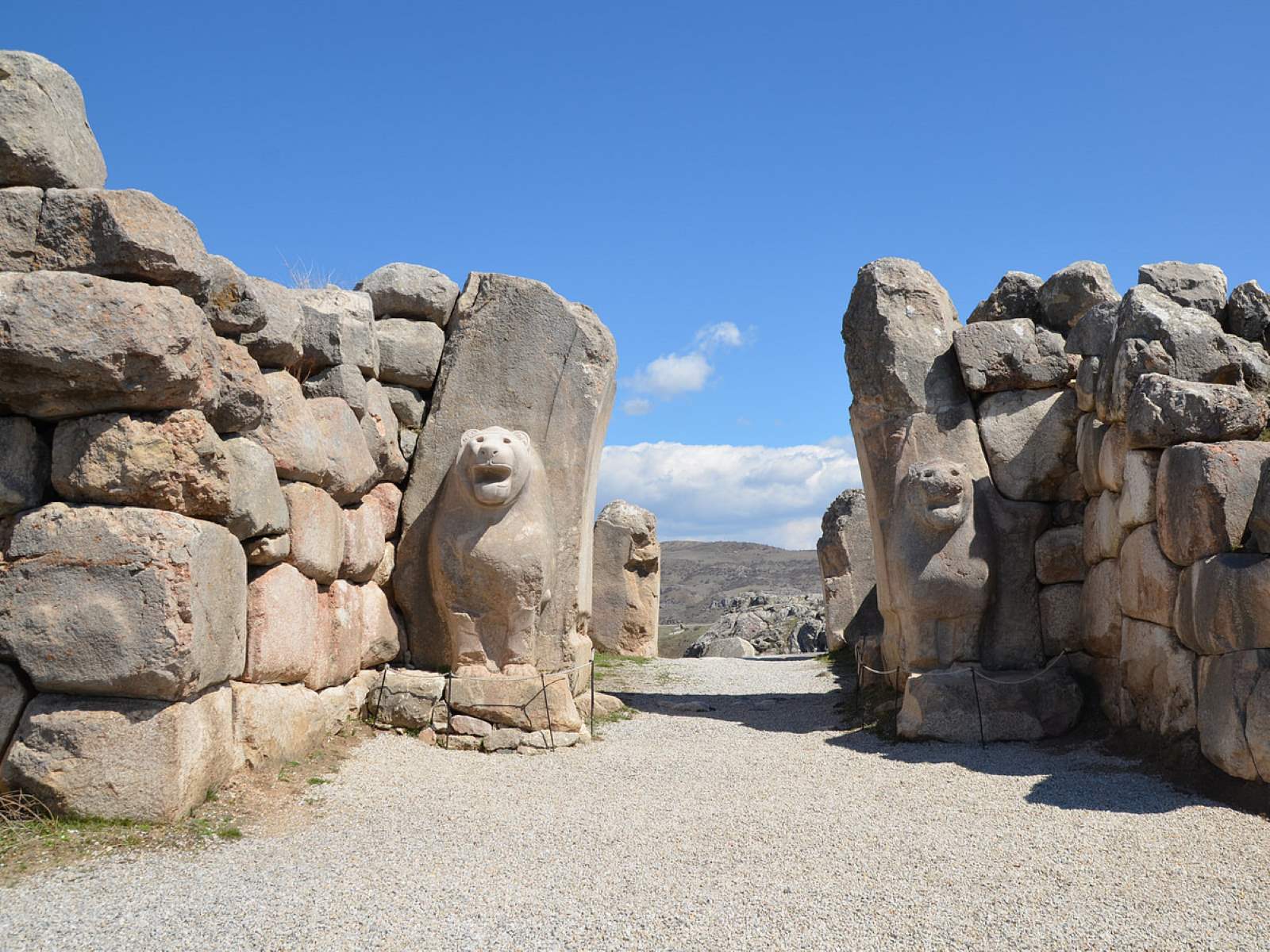
Why did the Kaska repeatedly invade the Hittite Empire? The Kaska, a non-Indo-European tribal people, lived in the mountainous region of East Pontic Anatolia, now northern Turkey. Their rugged homeland made them formidable opponents for the Hittites. First appearing in records during Hantili I's reign around 1590 BCE, the Kaska seized the holy city of Nerik, a significant religious center. Over centuries, they launched numerous invasions, even burning the Hittite capital, Hattusa, during Tudhaliya's reign around 1380 BCE. Despite Hittite punitive campaigns, the Kaska's guerrilla tactics and loose confederation structure allowed them to resist subjugation, contributing to the Hittite Empire's eventual collapse around 1200 BCE.
The Kaska and Their Homeland
The Kaska, also known as the Kaskians, were a Bronze Age tribal people who lived in the rugged mountains of East Pontic Anatolia, now northern Turkey. Their interactions with the Hittite Empire were marked by repeated invasions and conflicts.
-
Geographical Location: The Kaska lived in a mountainous region between the Hittite heartland in eastern Anatolia and the Black Sea. This rugged terrain made it difficult for the Hittites to conquer them fully.
-
Language and Ethnicity: The Kaska spoke an unclassified language called Kaskian, distinct from the Indo-European languages of the Hittites. They were a non-Indo-European tribal people, often linked with the Caucones mentioned in Greek records.
Early Encounters and Invasions
The Kaska first appeared in historical records during the reign of Hantili I, marking the beginning of their long and tumultuous relationship with the Hittites.
-
First Recorded Appearance: The Kaska first appear in records during Hantili I's reign (c. 1590 BCE – 1560 BCE), when they conquered the holy city of Nerik. This city was a significant religious center for the Hittites and remained under Kaska control for two centuries.
-
Repeated Invasions: The Kaska repeatedly invaded Hittite lands but never achieved permanent occupation, except around Nerik, which served as a gateway between Kaskan and Hittite territories.
Major Conflicts and Campaigns
The Kaska invasions were a constant thorn in the side of the Hittite Empire, leading to numerous military campaigns and significant conflicts.
-
Major Invasion Under Tudhaliya: During Tudhaliya's reign (c. 1380 BCE), a major Kaska invasion led to the brief occupation of the Hittite capital, Hattusa. The city was burned to the ground, marking a significant setback for the Hittites.
-
Punitive Campaigns: The Hittites launched numerous punitive campaigns against the Kaska. Prominent Hittite kings, including Mursili II, dedicated much of their reigns to campaigns against the Kaska.
-
Leadership Structure: Mursili II noted a Kaskan leader named Pihhuniya who acted as king of the Kaska. This was unusual, as the Kaska were typically organized in a loose confederation rather than a centralized state.
Attempts at Peace and Final Collapse
Despite the ongoing conflicts, there were occasional attempts at peaceful coexistence. However, the Kaska, along with other invaders, played a role in the eventual collapse of the Hittite Empire.
-
Treaties of Peaceful Coexistence: Occasionally, the Hittites and Kaska chiefs settled treaties of peaceful coexistence. Under Hittite king Arnuwanda I, there were attempts to mollify some Kaska tribes through tribute.
-
Final Collapse of the Hittite Empire: The Kaska, along with other invaders like the Sea Peoples and the Phrygians, contributed to the final collapse of the Hittite Empire around 1200 BCE. After this period, Hittite records provide little information about the Kaska.
-
Assyrian References: The Kaska are referenced in the neighboring Assyrian empire somewhat later. Assyrian king Tiglath-Pileser (c. 1112 BCE – 1072 BCE) fought against Kaskan forces, and the last reference to the Kaska comes from the time of Assyrian king Sargon II around 700 BCE.
Kaska Warfare and Tactics
The Kaska were known for their guerrilla warfare tactics, which made them formidable opponents for the more powerful Hittite Empire.
-
Kaska as Guerrilla Warriors: The Kaska are often considered one of the earliest recorded examples of guerrilla warfare. They used tactics like hiding in mountain hideouts and living off the land to avoid detection.
-
Mountainous Terrain: The mountainous terrain of their homeland provided the Kaska with natural defenses. This environment allowed them to maintain their independence and resist Hittite attempts at subjugation.
-
Loose Confederation: The Kaska formed a loose confederation of tribes rather than a centralized state. This structure allowed them to coordinate their efforts against the Hittites without a unified leadership.
Economic and Cultural Impact
The repeated Kaska invasions had significant economic and cultural impacts on the Hittite Empire and the broader region of ancient Anatolia.
-
Economic Impact: The Kaska invasions had significant economic impacts on the Hittite Empire. The repeated raids and invasions disrupted trade and agricultural activities, contributing to the overall instability of the region.
-
Cultural Significance: The Kaska invasions played a crucial role in shaping the cultural and political landscape of ancient Anatolia. Their resistance to the Hittite Empire reflects an early manifestation of anti-imperialist nationalism.
Historical Records and Legacy
The primary sources of information about the Kaska come from Hittite records, which provide valuable insights into their activities and interactions with the Hittites.
-
Historical Sources: The primary sources for information about the Kaska come from Hittite records. These sources include prayer inscriptions, letters, and other historical documents.
-
Kaska Settlements: The Kaska occupied simple settlements in their mountainous homeland. These settlements were often located in areas difficult for the Hittites to access, providing the Kaska with a strategic advantage.
-
Hittite Military Campaigns: The Hittites launched numerous military campaigns against the Kaska, but these campaigns were often unsuccessful in achieving permanent control over the region. The Kaska's guerrilla tactics and familiarity with the terrain made them difficult to defeat.
-
Hittite Legal System: The Hittites developed a distinctive legal system that focused on compensation of the victim rather than retribution. This was in contrast to other law codes in the Middle East, such as the Code of Hammurabi, which emphasized retribution.
-
Legacy of the Kaska: Despite their eventual disappearance from historical records, the Kaska left a lasting legacy in the history of warfare and resistance. Their tactics and strategies have been studied by historians and military strategists as early examples of guerrilla warfare.
The Legacy of Kaska Invasions
The Kaska invasions left a lasting mark on the Hittite Empire. These non-Indo-European tribes from East Pontic Anatolia were relentless in their raids, challenging the might of the Hittites for centuries. Their guerrilla tactics, use of rugged terrain, and loose confederation structure made them formidable foes. Despite numerous Hittite military campaigns, the Kaska managed to disrupt trade, agriculture, and stability in the region. Their repeated invasions, especially the major one under Tudhaliya, showcased their resilience and strategic prowess. The Kaska's role in the eventual collapse of the Hittite Empire around 1200 BCE underscores their impact. Though they faded from historical records, their legacy as early guerrilla warriors and resistors of imperial power remains significant. The Kaska invasions are a testament to the complex dynamics of ancient Anatolian politics and warfare.
Was this page helpful?
Our commitment to delivering trustworthy and engaging content is at the heart of what we do. Each fact on our site is contributed by real users like you, bringing a wealth of diverse insights and information. To ensure the highest standards of accuracy and reliability, our dedicated editors meticulously review each submission. This process guarantees that the facts we share are not only fascinating but also credible. Trust in our commitment to quality and authenticity as you explore and learn with us.


